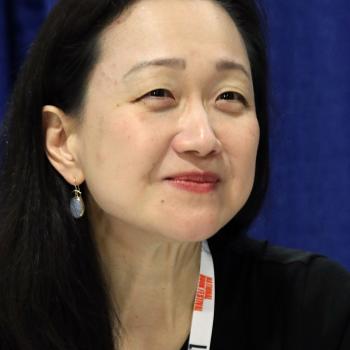Last week Dzhokhar Tsarnaev was found guilty on thirty counts. Jurors—and everyone else in and around Boston—now contemplate sentencing. Discussions about the death penalty have a strange ring in Massachusetts, a state that renounced it in 1984 and had its last execution 1947. Residents debate capital punishment for the Boston Marathon bomber, with the Boston Globe arguing against it.
What might be needed here is not an execution, but an execution sermon.
A genre distinctive (if not unique) to New England Puritans, the execution sermon occupied an important role in the administration of justice in colonial Massachusetts and well into the nineteenth century. The rhetorical form acknowledged that punishment had a moral meaning that the state by itself could not explain. Like many other places in the seventeenth and eighteenth centuries, public execution was a fact of life here, and thousands might come out to watch. Thus, in church before or at the actual execution, it was the task of a leading minister to assess the misdeeds of the convict, to connect his punishment somehow to the purpose and trajectory of the larger community, and to protect the event from veering into mere vengeance or rowdy spectacle. Some of the big names of Puritan New England–Samuel Danforth, Increase and Cotton Mather, Benjamin Colman–preached execution sermons, affirming the duty of civil government to assign punishment and the responsibility of the community to uphold standards of right.
Execution sermons, importantly, reminded audiences that they and the convict alike were stained with sin; criminals were not merely monsters but in ways resembled others in the community who, but for the restraining grace of God, could also fall to wickedness. Scott D. Seay posits, in Hanging Between Heaven and Earth, that the execution sermon went through three phases in its long New England history: from seventeenth-century linking of the convict’s personal guilt to general human depravity, to emphasis on the criminal’s conversion after the eighteenth-century Great Awakening, up to the genre’s expiry in the early nineteenth century, when sermons dramatized the story of the condemned and plumbed environmental causes of decline.
These texts might sting twenty-first century ears, but overall they kept clear of sensationalizing or romanticizing crime or punishment. Puritan ministers, with moral authority drawn from the community and affirmed by it, could encourage the victims, temper the vindictive, and call all to rectitude.
Thankfully we have left behind the public execution. That use of state power even behind walls gives pause. But wanting now is a moral expression like that of the sermon occasioned by the condemned. To be sure, other voices appropriately now are raised, from relatives of victims, bystanders, editorialists. But this matters: the attack was felt not only by the injured but by Boston as a whole. The brothers struck not just on Marathon Day but on Patriots Day, which Masha Gessen, author of a recent Tsarnaev biography, describes as a major public holiday in Boston, the “the other Fourth of July.” As they commemorate the April 19, 1775 battles of Lexington and Concord, on one of the first tender days of spring, Massachusetts folk cheer the Red Sox at Fenway and revel in their state’s Revolutionary role. After the attack “Boston Strong” refrains united the city, but now reckoning is to be made, seeking justice, sizing up the damage and healing.
Where is Cotton Mather when we need him?












